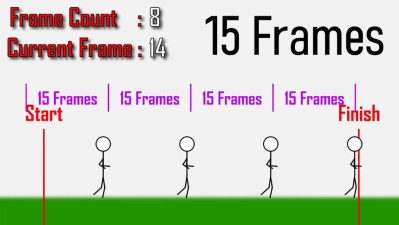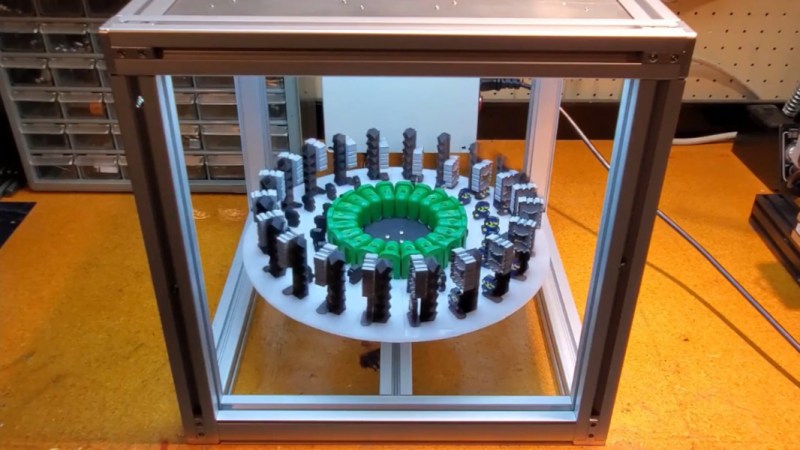Although film and animation have come quite a long way, there’s still something magical about that grandaddy of them all, the zoetrope. Thanks to persistence of vision, our eyes are fooled into seeing movement where there is none, only carefully laid-out still pictures strobing under the right lighting.
After four months of research, CAD, prototyping, and programming, [Harrison McIntyre] has built a 3D zoetrope that brings a gif to glorious physical life (video, embedded below). All the image pieces are printed and move  under a fancy backlight that [Harrison] borrowed from work. It works essentially the same as a 2D zoetrope, as long as you get the spacing juuuuust right. 360° divided by 20 frames comes out to 18° per frame. So a motor spins the disk around, and every 18°, the light pulses for one millisecond and then turns off until the next frame is in position.
under a fancy backlight that [Harrison] borrowed from work. It works essentially the same as a 2D zoetrope, as long as you get the spacing juuuuust right. 360° divided by 20 frames comes out to 18° per frame. So a motor spins the disk around, and every 18°, the light pulses for one millisecond and then turns off until the next frame is in position.
The really interesting thing is that there are actually more than 20 frames at play here. If you follow a single character through the loop, it takes 46 frames to complete the animation thanks to something 3D zoetrope pioneer [Kevin Holmes] dubbed ‘animation multiplexing‘, which in [Harrison]’s example, is easily explained as a relay race in which all runners run their section at the same time, creating the illusion of constant motion.
There’s more than one way to use a 3D printer to create a zoetrope, and we doubt we would have ever thought of this one that squashes four dimensions into three.















This idea has been around a little while, in the UK at least: https://4-mation.co.uk/
He talks about/credits and collaborated with them in the video. Maybe next time watch the creators video before criticizing them.
https://4-mation.co.uk/ have been doing this for a little while now
he mentions them in the video as inspiration/collaboration
The fish one is awesome. Though they all are..
Very neat, though he’s unintentionally confusing his viewers by saying his character only has 46 frames of animation… no, there is 60. He doesn’t count the last 14 frames as the block rises back up to squash the next character. The number of “frames” is always a multiple of the number of segments of the disc – just like the explanation he gives afterwards of how 15 x 4 = 60. Since he has 20 segments, his multiplier is 3. 46 frames with 20 segments would be 2.3.
this guy…. https://gregorybarsamian.com/
“animation multiplexing” reminds me of the infinitely ascending tone, the shepard tone…one of my favorite illusions
Thanks for introducing me to this!
https://en.wikipedia.org/wiki/Shepard_tone
Those samples broke my brain, especially the accelerating rhythm effect.